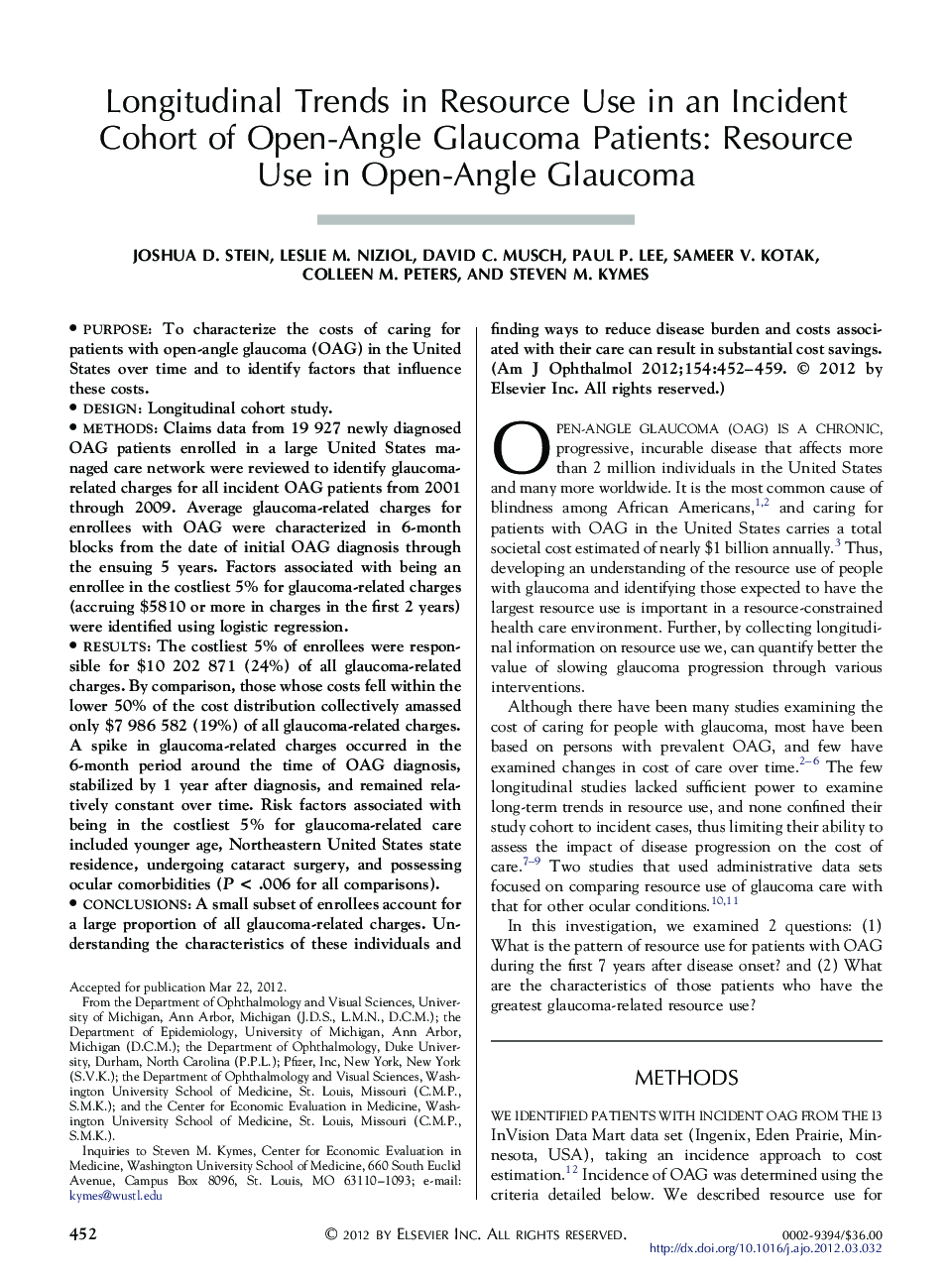| Article ID | Journal | Published Year | Pages | File Type |
|---|---|---|---|---|
| 6196040 | American Journal of Ophthalmology | 2012 | 10 Pages |
PurposeTo characterize the costs of caring for patients with open-angle glaucoma (OAG) in the United States over time and to identify factors that influence these costs.DesignLongitudinal cohort study.MethodsClaims data from 19 927 newly diagnosed OAG patients enrolled in a large United States managed care network were reviewed to identify glaucoma-related charges for all incident OAG patients from 2001 through 2009. Average glaucoma-related charges for enrollees with OAG were characterized in 6-month blocks from the date of initial OAG diagnosis through the ensuing 5 years. Factors associated with being an enrollee in the costliest 5% for glaucoma-related charges (accruing $5810 or more in charges in the first 2 years) were identified using logistic regression.ResultsThe costliest 5% of enrollees were responsible for $10 202 871 (24%) of all glaucoma-related charges. By comparison, those whose costs fell within the lower 50% of the cost distribution collectively amassed only $7 986 582 (19%) of all glaucoma-related charges. A spike in glaucoma-related charges occurred in the 6-month period around the time of OAG diagnosis, stabilized by 1 year after diagnosis, and remained relatively constant over time. Risk factors associated with being in the costliest 5% for glaucoma-related care included younger age, Northeastern United States state residence, undergoing cataract surgery, and possessing ocular comorbidities (P < .006 for all comparisons).ConclusionsA small subset of enrollees account for a large proportion of all glaucoma-related charges. Understanding the characteristics of these individuals and finding ways to reduce disease burden and costs associated with their care can result in substantial cost savings.
